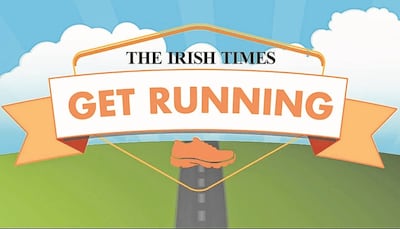One year on and we know every corner and pothole within our 5km radius. It’s completely understandable if your enthusiasm for running might be waning especially if every run you take on feels very similar to the last one. Although we can’t change where we run right now, we still do have the option to change how we approach each run. We can change our speed, our focus and our perspective on any given run to give it a new lease of life.
Here are 15 ways to approach your next run that will take you out of your running rut and inspire you to see what you are capable of.
1) Reverse your route: The most simple of all changes is to run your regular route in reverse. The uphills become down, your usual landmarks look different and you never know what you might notice when you go the wrong way around.
2) Short intervals: An app like Interval Timer can be a great asset to a runner as you can programme fast/slow intervals and just listen out for the beep for when you change your pace. For 30 minutes aim for two minutes slow, one minute faster. The time will fly by.
3) Change time of day: With added daylight there are more options now to run in mornings and evenings. Try running at a different time in your day than you usually go. Evening or morning, you decide. Don't forget lunchtime is a great option to give you energy for your afternoon.
4) Slow out and fast home: Run slowly in one direction for 15 minutes then turn around and get home quicker. Can you knock off a minute or two on the home stretch?
5) Count your breath: How many steps do you take on an inbreath, how many on an outbreath? Count as you go and notice how it changes as you climb a hill or change your speed. Experiment with slowing your breath and notice how it makes you feel on your run.
6) Go for it: Map out a 5km route and run it like it is a race or parkrun. Warm up well and see how you go. Make a note of how long it takes and try again in another few weeks on the same route.
7) Stop half way: Yes, you are allowed stop in the middle of a run. In fact, sometimes I would encourage it. Take a break somewhere and notice what is around you. Catch your breath, do a stretch or two and appreciate what your body can do before you head for home.
8) Relax your grip: Notice what your hands and feet do when your run. Can you wiggle your toes? Are your fists held tight? Aim to relax the fingers and the toes when running. Release tension when running and try to shake out legs and arms to help you feel looser and more relaxed.
9) Long intervals: Set a timer to beep every five minutes. Alternate between slow and faster every minutes. Use the slow intervals to relax and recover and push on for the faster sections. Your fast pace for five minutes is not a sprint – pace yourself to last the distance.
10) Forget the clock: Leave your watch and gadgets at home. Go for a run where none of the statistics matter. Run free without pressure to reach any targets.
11) Smile: A real smile or a fake one will help relax your body. It is also a good opportunity to appreciate all your body can do. Rather than think about pace or technique, focus on all running has given to you, the freedom, the fitness and the friends. Be grateful on your run.
12) Add in exercises: Every five minutes on your run stop for one minute and pick an exercise to do. Choose from squats, lunges, planks, run up some steps or choose whatever exercise comes to mind.
13) Notice nature: These are great months to notice the change in our environment. Your challenge on this run is to notice the changes of the season on your path. What do you hear, see or smell? Slow down your pace and enjoy your surroundings.
14) Gradually increase pace: Set out on your route with the intention of each kilometre being a little faster than the previous. This will discipline you to start slow but to stay focused right to the end to finish strong as you build up the speed gradually with each kilometre.
15) Walk instead: Walking might not seem like much of a challenge for a regular runner but it is a wonderful way to focus on moving slower with less tension and more focus. You can practise most of the suggestions above while walking without the pressure to keep on running.
Before you head out the door on your next run, ask yourself this question: what is the purpose of my run today? Set your intention before you leave home. As runners, there is always more to learn, different ways to challenge ourselves and new experiences to be had – even if all our runs still remain local to home for now.
Building variety strengthens the body, the mind and most importantly stops us getting stuck in a rut. It might also raise your interest in another aspect of running you might not have considered before now. You have nothing to lose. Give them a go.

Sign up for one of The Irish Times' Get Running programmes (it is free!).
First, pick the eight-week programme that suits you.
- Beginner Course: A course to take you from inactivity to running for 30 minutes.
- Stay On Track: For those who can squeeze in a run a few times a week.
- 10km Course: Designed for those who want to move up to the 10km mark.
Best of luck!
– Mary Jennings is founder and running coach with ForgetTheGym.ie and author of Get Running.












